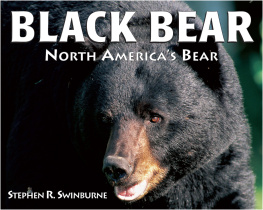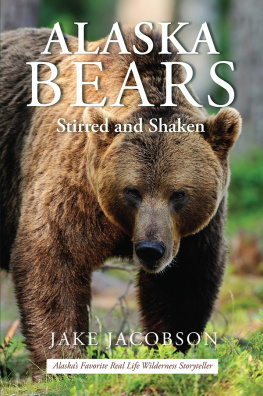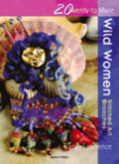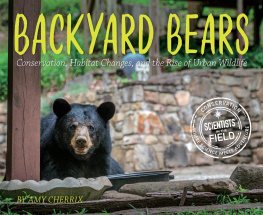
Now we can say that Derek Stonorov literally wrote the book about the behavior of Alaskas coastal brown bears. As a pioneer and continuing expert in the field, he not only shares his half century of learning but proves himself to be a superb storyteller. This book will fascinate anyone interested in animal or human behavior or in the process of scientific inquiry.
Nancy Lord, author of Beluga Days and Early Warming
Not only is Derek Stonorov a good scientist; he has also written a fun and thrilling story about the behavior, ecology, and conservation of Alaska brown bears, as well as the challenges, excitement, and responsibility of living in harmony with bears. I highly recommend this book to anyone interested in the conservation of brown bears and their Alaska wilderness habitat.
John Schoen, author of Tongass Odyssey: Seeing the Forest Ecosystem through the Politics of Trees

Watch the Bear
A Half Century with the Brown Bears of Alaska
Derek Stonorov
University of Nebraska Press | Lincoln
2023 by Derek Stonorov
Cover designed by University of Nebraska Press; cover image courtesy of the author.
Excerpts of chapter 28 were previously published in Living in Harmony with Bears (Alaska: National Audubon Society, 2000), 1112.
All rights reserved
The University of Nebraska Press is part of a land-grant institution with campuses and programs on the past, present, and future homelands of the Pawnee, Ponca, Otoe-Missouria, Omaha, Dakota, Lakota, Kaw, Cheyenne, and Arapaho Peoples, as well as those of the relocated Ho-Chunk, Sac and Fox, and Iowa Peoples.
Library of Congress Cataloging-in-Publication Data
Names: Stonorov, Derek, author.
Title: Watch the bear : a half century with the brown bears of Alaska / Derek Stonorov.
Description: Lincoln : University of Nebraska Press, [2023]
Identifiers: LCCN 2022031538
ISBN 9781496233431 (paperback)
ISBN 9781496234957 (epub)
ISBN 9781496234964 (pdf)
Subjects: LCSH : Brown bearAlaska. | Brown bearBehaviorAlaska. | BISAC : NATURE / Animals / Bears | HISTORY / United States / State & Local / West ( AK , CA , CO , HI , ID , MT , NV , UT , WY )
Classification: LCC QL 737. C 27 S 7295 2023 | DDC 599.78409798dc23/eng/20220712
LC record available at https://lccn.loc.gov/2022031538
The publisher does not have any control over and does not assume any responsibility for author or third-party websites or their content.
For Molly
Contents
Map
Photographs
Without the suggestions, critiquing, and editing by my wife, Molly, this book never would have been completed.
The old adage you meet your friends along the trail is more than true. I met Madeleine Eno completely by chance after writing a first draft for this book. As my patient and more than competent first editor, her wise advice on organization and style helped bring Watch the Bear into a publishable manuscript. Eventually, we did walk the same trails on Tutuk Creek. Madeleine is a true gem and is not scared of bears.
John and Mary Beth Schoen have long encouraged my writing efforts. Having a knowledgeable person like Mary Beth say I really learned about bear behavior after she read the manuscript pushed me toward seeking publication. The story, science, and conclusions are my own, but having the support, advice, and eventual manuscript review by John, a respected wildlife ecologist, editor, and accomplished author, has been a great gift.
Nancy Lords comments after reviewing Watch the Bear confirmed to me that I had both a good story and the ability to interpret the intricacies of bear behavior. Confirmation is very important to aspiring writers. Ive never watched bears with Nancy, although one snowy spring day we searched for dens. Bears have a true friend in Nancy, as do belugas, salmon, and other living things.
Clark Whitehorn at Bison Books and the University of Nebraska Press has been supportive from query to publication. His interest and knowledge of bears and their behavior along with his enthusiasm make me grateful to Clark for allowing me to tell my story.
Most of the information about the movement of bears from one place to another in Watch the Bear is my own. However, the research and publications of Lee Glen, Lee Miller, Jim Faro, Dick Sellers, and Sean Farley of the Alaska Department of Fish and Game, as well as Grant Hilderbrand of the National Park Service and Karyn Rode of the U.S. Geological Survey, have undoubtedly influenced me and certainly added greatly to my knowledge of bears.
Al Stokes is long gone but his teaching still enters most of my thoughts on behavior. Hes constantly peering over my shoulder asking, How do you know that? Much of the data I collected with him appears in this book.
Jane Kauvar, John Athens, and Michael Gill read the manuscript and offered encouragement.
Lastly and most importantly, I am indebted to Ken and Chris Day and Dave Bachrach for sharing their experiences, knowledge, and friendship. Perhaps without knowing, they are among the most important contributors to this book.
Their [human and bear] history together has been rich and primal. The bear has represented fearful evil and, at other times, regenerative power. The bear is not only complex, but ambiguous and contradictory.
Paul Shepard and Barry Sanders, The Sacred Paw
Late September. Im alone and sitting on a tundra-covered hillside at the eastern end of Lake Becharof, Alaska, watching Slade, a huge, fully grown brown bear, who could weigh close to a thousand pounds. Hes walking along a bear trail that connects two creeks, each full of dead, dying, and spawned-out red salmon. His new winter coat catches the light from the low-angle fall sun, which gives his dark brown hair silvery highlights. If he continues, hell pass about a hundred feet from me.
Queen Elizabeth and her two yearling cubs are eating blueberries near the trail Slade is using. Ive been watching for several hours, taking notes on their activities. Ive been hoping for another bear to come along the well-used path so I can see some sort of interaction, envisioning that one of the areas legion of subadult bears might wander by and Queen Elizabeth, being a protective mother, would charge and chase.

Lake Becharof, McNeil River, and the Alaska Peninsula. Created by Erin Greb.
Instead I get Slade, a real treat, and a bear I dont see every day. When Slade is still a few hundred yards from the bear family, they stop eating and slowly amble off. They give no indication, other than their timely departure, that they sense his approach. Likewise, Slade shows no sign he knows they are there, continuing his characteristic, head-down, pigeon-toed walk.
A steady wind blows from Slades direction toward the mother and cubs. I can guess, but certainly not prove, that Queen Elizabeth caught his scent, recognized it as coming from a male, and moved away, wishing to avoid physical confrontation and possible predation to her cubs.
When Slade nears me, he stops and lifts his head. His face gives no hint of tension, his ears remain up, and his mouth stays closed. His eyes seem to lock on mine and we give each other a long, hard stare.
Next page












